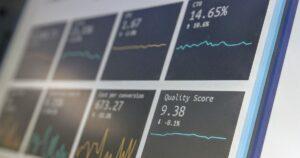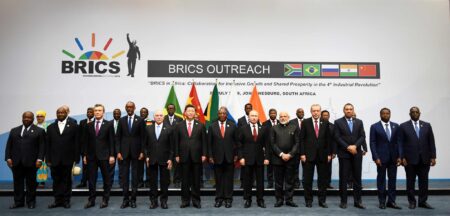- The PMI Survey has found that Kenyan businesses witnessed increased demand for their exports in the international market in November 2022
- New order inflows received by Kenyan businesses rose in November, extending the current growth sequence to three months
- Although marginal in November, the rate of employment growth was the quickest since July 2022, attributable to a rise in new orders
Kenyan businesses witnessed increased demand for their exports in the international market in November 2022. This is according to the latest Purchasing Managers’ Index (PMI) commissioned by Stanbic Bank Kenya. The index found that the rise in export orders strengthened further from October figures, having increased in each month since April 2022.
At the same time, new order inflows received by Kenyan businesses rose in November, extending the current growth sequence to three months. The rate of increase accelerated from the previous survey period and was modest but slower than the long-run trend. Where rising new orders were recorded, survey panellists often cited new clients and improved cash flow.
Overall, output levels among Kenyan businesses expanded in November, following a slight contraction during October. As per the PMI survey, although minimal, the upturn was only the third recorded in 2022 so far. Panellists mainly linked the increase to a faster rise in new work and favourable weather. Sector data showed that growth was broad-based in November, led by construction and agriculture.
Activities among Kenyan businesses saw the headline PMI figure rise to 50.9 in November, up from 50.2 in October, signalling a slight improvement in the sector. Readings above 50.0 signal an improvement in business conditions in the previous month, while readings below 50.0 show a deterioration.
Commenting on the performance, Mulalo Madula, Economist at Standard Bank, said that activity among Kenyan businesses has continued to grow slowly for the third consecutive month.

“Firms registered a marginal increase in output amid an increase in new business from domestic and foreign customers and favourable weather conditions. Still, rising input and output prices alongside monetary policy tightening has not caused a negative demand shock in nominal terms. The second rainy season, the ‘short rains’, appears to be going better than previously forecast,” Madula said.
Jobs in Kenya
The PMI survey also found a continued rise in staffing among Kenyan businesses. Although marginal in November, the rate of employment growth was the quickest since July 2022. The index attributed the improved rate of employment to a rise in new orders. Employment rose in manufacturing, agriculture and services but fell in wholesale and retail and was unchanged in construction.
Businesses in Kenya were negatively affected by August 2022 Elections – PMI
At the same time, staff costs at Kenyan businesses decreased in November. This marked the first monthly reduction in nine months. That said, the pace of decline was only fractional, with the vast majority of survey respondents (99%) indicating no change in their labour expenses from October.
Inflation affects Kenyan businesses
The latest survey data also signalled another steep increase in overall costs in Kenyan businesses. Companies noted inflationary pressures from higher tax burdens, rising transport costs and a deteriorating exchange rate against the US dollar. However, a renewed fall in staff costs, combined with a weaker rise in purchase prices, led to the softest rise in total input costs since August.
The businesses also registered a sharp increase in purchasing costs in November, albeit one that was much slower than October’s survey-record high. Indeed, the pace of inflation was only fractionally above August’s seven-month low. Around 17% of respondents saw purchase costs rise over the latest month, with mentions of increased import costs due to a weaker exchange rate, supply shortages and higher VAT payments.
November also saw a further sharp rise in prices charged at Kenyan companies, as firms often looked to pass rising operating costs on to their customers.
Charge inflation was particularly steep in the wholesale & retail, and agriculture categories. However, in line with a slowdown in input cost pressures, the overall increase in selling prices was the softest for three months.
“A positive assessment of the 12-month outlook suggests that businesses expect improvement despite the expected challenging global economic environment. This has led businesses to increase purchasing activity almost as strongly as in October and build up inventories. Headcount also increased at its fastest pace since July as businesses prepare for another surge in demand.”











